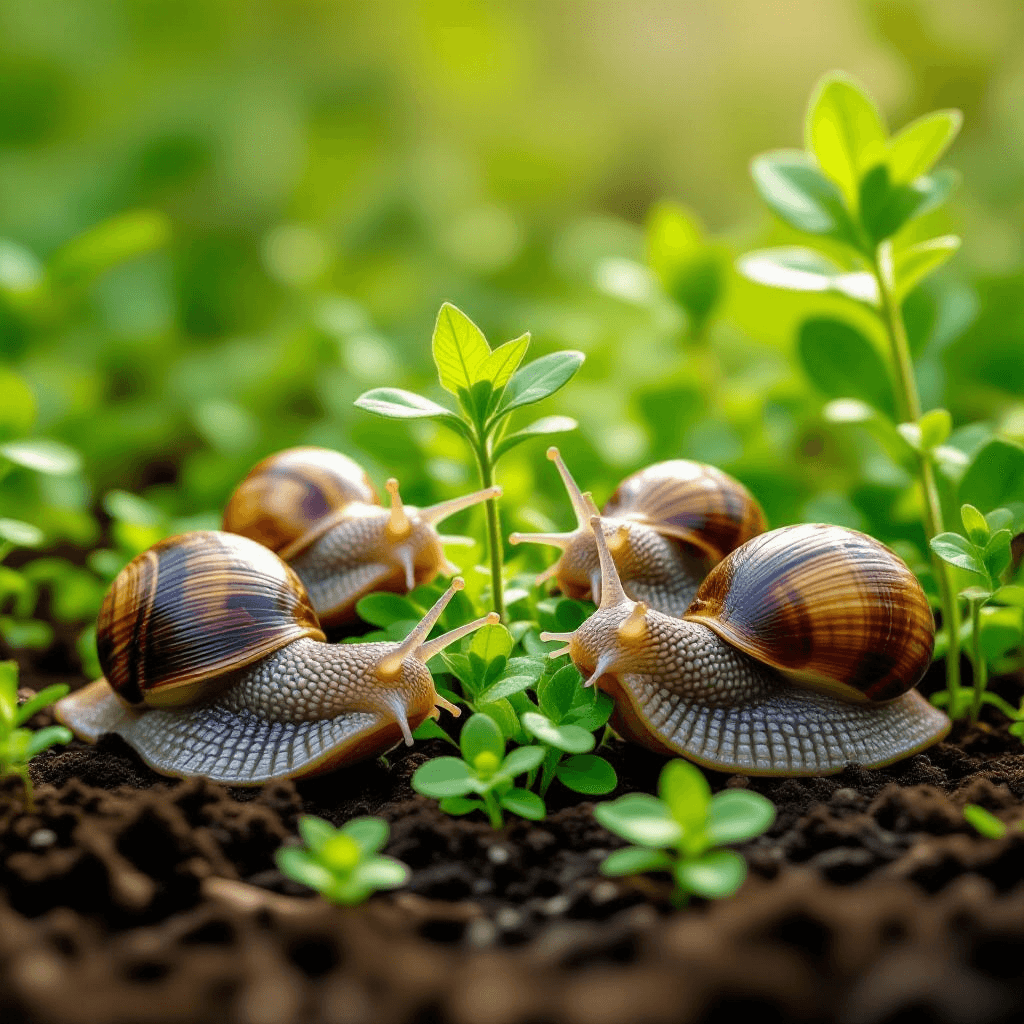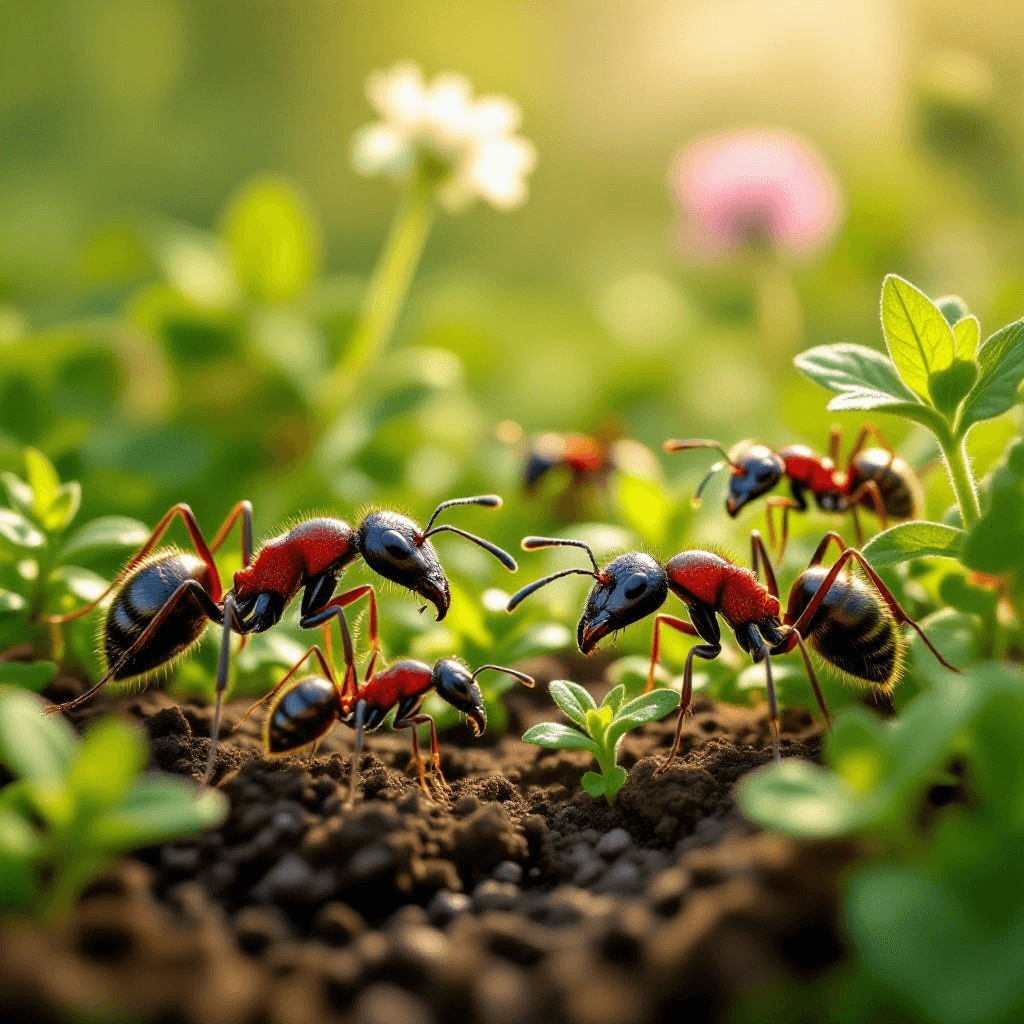Understanding Slugs and Snails: A Garden Pest Overview
Slugs and snails, belonging to the mollusk family, are gastropods that pose significant challenges for gardeners. These soft-bodied creatures are mostly nocturnal, emerging at night to feed on a variety of plants, including leaves, fruits, and seedlings. While both slugs and snails share similar feeding habits and habitats, the primary distinction between them lies in their physical characteristics. Snails feature a coiled shell that serves as protection, whereas slugs lack this hard outer covering, making them more vulnerable and prone to drying out in harsh environments.
Both slugs and snails undergo a simple life cycle consisting of four main stages: egg, juvenile, adult, and reproduction. The adult gastropods typically lay eggs in moist environments, with a single female capable of depositing up to 100 eggs at once. These eggs hatch into tiny juveniles, which mature within a few weeks under favorable conditions. The optimal habitats for these creatures are damp and shaded areas, such as under mulch, within dense foliage, or near a water source, wherein they find the moisture necessary for survival.
The feeding behavior of slugs and snails can cause considerable damage to garden plants, particularly tender seedlings and leafy greens. They use a specialized organ called a radula, which functions like a toothed tongue, to scrape away the surface of their food. This feeding method can lead to ragged holes in leaves, stunted growth, or even plant death. Moreover, slugs and snails tend to congregate in groups during feeding, which can exacerbate the level of damage they inflict on the garden.
Understanding these creatures’ biological characteristics, life cycle, and behaviors is crucial for effective identification and control strategies. By recognizing the specific types commonly found in gardens and their preferred habitats, gardeners can take informed steps to manage slug and snail populations, minimizing their impact on garden health.
Identifying Signs of Slug and Snail Damage in Your Garden
Recognizing the signs of slug and snail damage in your garden is crucial for effective pest management. These mollusks are notorious for their feeding habits, which can lead to serious harm to a variety of plants. One of the primary indicators of a slug or snail infestation is the presence of chewed leaves. Generally, these pests prefer tender foliage, often leaving behind irregularly shaped holes that can severely compromise the health and appearance of your plants.
Another telltale sign of slug and snail activity is the discovery of slime trails. These trails can often be seen on damp surfaces, especially in the morning or after rainfall when these creatures are most active. The presence of slime might indicate a significant population of slugs or snails nearby, suggesting that immediate attention is required. It is important for gardeners to routinely inspect their gardens, particularly in areas that are prone to moisture accumulation, as these environments are favorable conditions for slug and snail survival.
Additionally, certain plants are particularly vulnerable to infestations. Young seedlings, leafy greens, and delicate flowering plants are frequent targets. Crops like lettuce, hostas, and pansies are often observed as having higher susceptibility to slug and snail damage. Gardeners should focus their monitoring efforts on these plants to intercept any infestations before they escalate. By being vigilant and observing the signs of slug and snail activity, you can implement control measures proactively, diminishing the likelihood of significant damage in your garden.
Effective Control Measures for Slugs and Snails
Managing slug and snail populations in the garden can be achieved through a combination of effective strategies. These methods can be categorized into organic control options, chemical interventions, physical barriers, and cultural practices that foster a less hospitable environment for these pests.
One of the most environmentally friendly approaches is the use of organic control options. Natural predators, such as birds, toads, and certain types of beetles, can help reduce slug and snail numbers. Additionally, introducing nematodes, microscopic worms that target slugs in the soil, can be an effective biological control method. Utilizing diatomaceous earth as a barrier provides a non-toxic means to deter these pests due to its abrasive texture, which can cause dehydration when they cross it.
For those inclined towards chemical methods, various slug and snail baits are available. However, caution must be exercised as these can potentially harm other non-target garden wildlife. Choosing products that contain iron phosphate, while being less toxic to beneficial organisms, is generally recommended as a safer option. Still, it is vital to follow application instructions carefully to minimize environmental impact.
Physical barriers are another practical method of exclusion. Copper tape, when placed around plant beds, creates a slight electrical charge that deters slugs and snails. Additionally, beer traps can lure slugs into a container where they drown, effectively reducing their population without harming other garden pets.
Finally, adopting cultural practices contributes greatly to pest deterrence. Maintaining garden cleanliness, managing moisture levels, and removing debris can help minimize habitats conducive to slug and snail infestations. Implementing these strategies collectively can lead to a sustainable approach in managing slugs and snails while preserving the ecological balance in the garden.
Preventative Tips to Keep Slugs and Snails at Bay
Maintaining a healthy garden ecosystem requires proactive measures to deter slugs and snails from infiltrating your precious plant life. One effective strategy is to focus on garden maintenance, which includes regular weeding and precise watering practices. By removing debris, excess moisture, and any potential hiding spots like piles of leaves or rocks, you create an environment less conducive to these pests.
Furthermore, consider implementing a shadier landscape. Many slugs and snails thrive in damp, dark conditions. By strategically positioning your plants and allowing more sunlight to penetrate the garden, you can significantly reduce moisture levels. In addition, it’s essential to choose the right plants for your garden. Opting for less susceptible varieties—such as lavender, rosemary, or sage—can create a natural deterrent to these mollusks. When selecting new plants, consider researching species that tend to resist snail and slug damage.
Habitat management is another crucial aspect of preventing slug and snail infestations. Establishing physical barriers can be highly effective. Copper tape, for example, can be placed around garden beds or pots since slugs and snails experience discomfort when they cross copper surfaces. Additionally, using coarse materials such as crushed eggshells or diatomaceous earth offers an abrasive texture that can deter these pests from reaching delicate foliage.
It is vital to engage in ongoing vigilance to maintain these preventative measures. Regular checks of your garden can identify early signs of infestation, allowing for prompt action to prevent escalation. Monitoring moisture levels and promptly addressing any excess rain or sprinkler issues will further contribute to a dry and uninviting habitat. By integrating these strategies consistently, gardeners can successfully create an unfavorable environment for slugs and snails while promoting the health of their plants.


